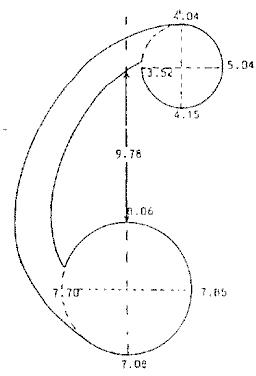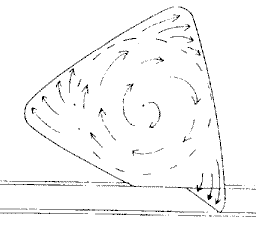 |
Science Frontiers ONLINE No. 73: Jan-Feb 1991 |
|
|
Crop Circle Corner
 The Wiltshire crop "scroll". Dimensions in meters. |
We have room here for only a few brief items.
Scorched earth in Xenia, Ohio. A hired hand of Gene Eck was harvesting a field of soybeans when he came upon a circle of flattened plants -- bent but not broken -- some 80 feet in diameter. Inside this circle was a 40-foot-diameter ring of burnt stubble. Within the ring was a patch of undisturbed foxtail 14 feet in diameter. The soybean circle was a half mile from the nearest road; no tracks led into it. (Williams, Nat; Illinois Agri-News, November 9, 1990. Cr. R.A. Ford)
Column of light in Wiltshire. During the summer of 1990, teams of English ob servers scanned the cereal fields at night. At 2:30 AM, on July 25, R. Fla-herty, an experienced wildlife photographer, saw a single shaft of light descending from high in the sky toward a Wiltshire wheat field. Flaherty's view of the field itself was cut off by a ridge, so he could provide no further data. When morning came, as you probably surmised, the field displayed flattened wheat -- not the run-of-the-mill circles, but a scroll of sorts and even a triangle with rounded corners. (Meaden, G.T.; "The Beckhampton 'Scroll-Type' Circles, the Beckhampton 'Triangle,' and Strange Attractors," Journal of Meteorology, U.K., 15:317, 1990.)
Comment. Could the English column of light have been created by the same force that made the Ohio burnt circle?
 The "triangle" nearby. The sides are 10-11 meters long. |
Comment. That all crop circles are manmade is debatable, certainly many are, and one can make a case for a meteor ological origin for the simpler geometries. One English contact states firmly that a review of old aerial photographs found no complex patterns at all. But who knows what next week's mail will bring?